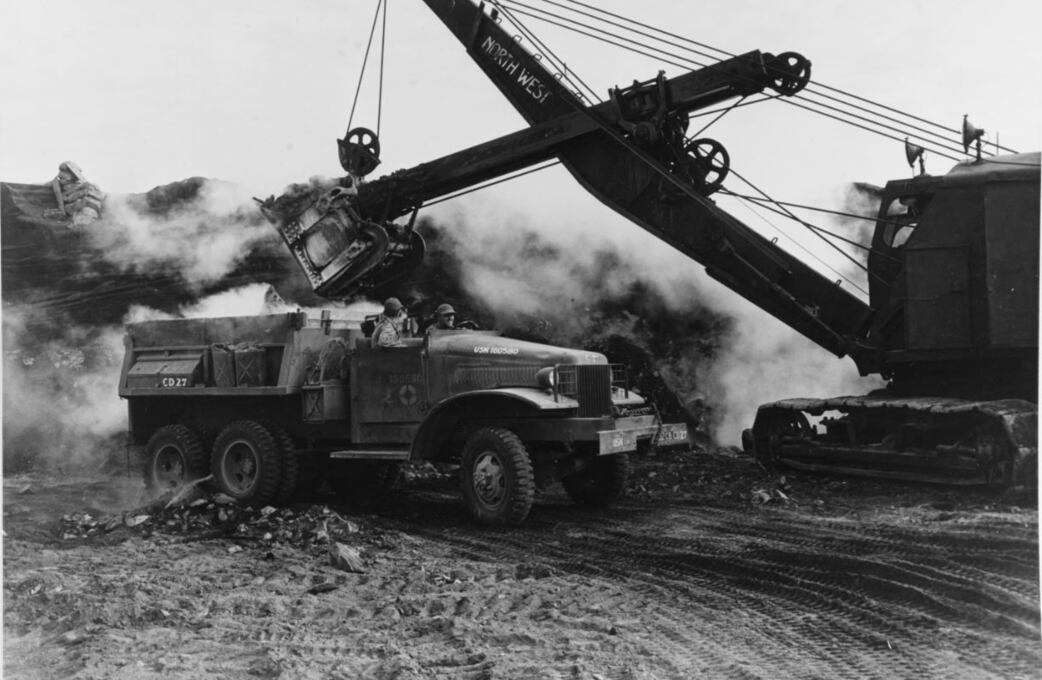On the morning of Feb. 19, 1945, Navy Lt. James Vedder, combat surgeon for the 27th Regiment, 5th Marine Division, waited for his landing craft to touch the volcanic sands of Iwo Jima, the island that would serve as the doctor’s first test in combat.
Undoubtedly anxious, he could at least console himself with the thought that planners expected only a two-day offensive, with a third day dedicated to mopping up enemy resistance.
U.S. commanders predicted that the assault force of 80,000 combat-hardened Marines could rapidly traverse the island neutralized from bombardment, either destroying the Japanese in their defensive positions or mowing them down in waves if they launched desperate banzai attacks.
The Navy had originally scheduled these same three divisions for use in the Okinawa invasion just 30 days later, demonstrating that it did not consider the operation very difficult, at least initially.
At 0830 battleships, cruisers, and destroyers leveled their guns on the beachhead of Iwo Jima and blasted the landscape with a massive bombardment.
The violent explosions ashore quickly shrouded the visible topography of the island in smoke and debris.
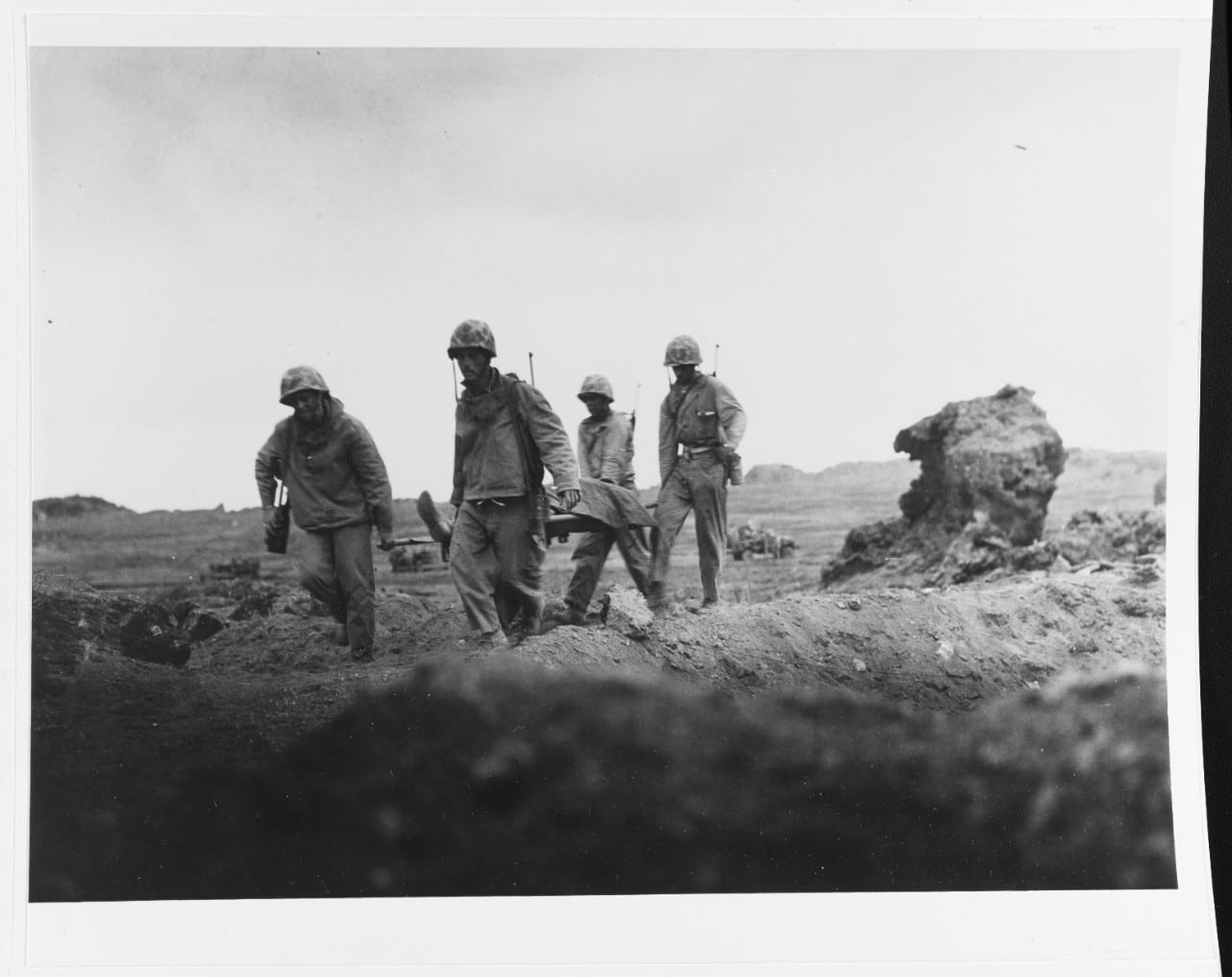
Little did Vedder know that U.S. commanders had seriously underestimated the defenses on Iwo Jima, incorrectly assumed Japanese defensive strategy and overrated the effects of American technological and numerical superiority.
The men of the Japanese 109th Infantry Division, in their meticulously designed fortifications, were poised to skillfully defend Sulfur Island (the literal translation of the Japanese name “Iwo Jima”) from the 3rd, 4th, and 5th Marine Divisions, resulting in the most appalling battle of the Pacific War.
With a bare 20 months of military experience, Dr. Vedder was about to face 33 days of the most horrific carnage imaginable as American boys and amphibious veterans fed the meat-grinder on Iwo Jima.
Vedder hit the beach just minutes behind the first waves of troops, attempting to exercise compassion in hell.
Peacetime forgets that wartime’s accounts of misery, destruction, and death can be amazingly direct, detailed, and diverse.
On the lunar landscape of Iwo Jima, Vedder treated wounds that mangled faces, shattered jaws, and split skulls wide open.
He frequently attempted to care for American boys with missing limbs, wounds so devastating that no healing was possible.
He witnessed Marines and sailors dying most violently from artillery and mortar rounds, as well as from unexpectedly precise Japanese marksmanship.
He looked after sanitation aspects of hundreds of decomposing corpses.
The same insects that infested the dead infiltrated the eyes, ears, and nostrils of the living; or worse, they contaminated food for human consumption. In all this horror, his job became almost routine, allowing for humor or even brief moments of happiness.
However, in a 220-page narrative dedicated to the battle, combat surgeon Vedder made no mention of an American flag raised on top of Mount Suribachi.
Perhaps that omission constitutes the most important evidence of all.
Nearly everyone has heard of Iwo Jima and recognizes the monumental icon of U.S. servicemen raising the American flag on top of Mount Suribachi in 1945. The general public understands that this image symbolizes patriotism and valor, even though the picturesque scene greatly minimizes the miserable experience of the combatants.
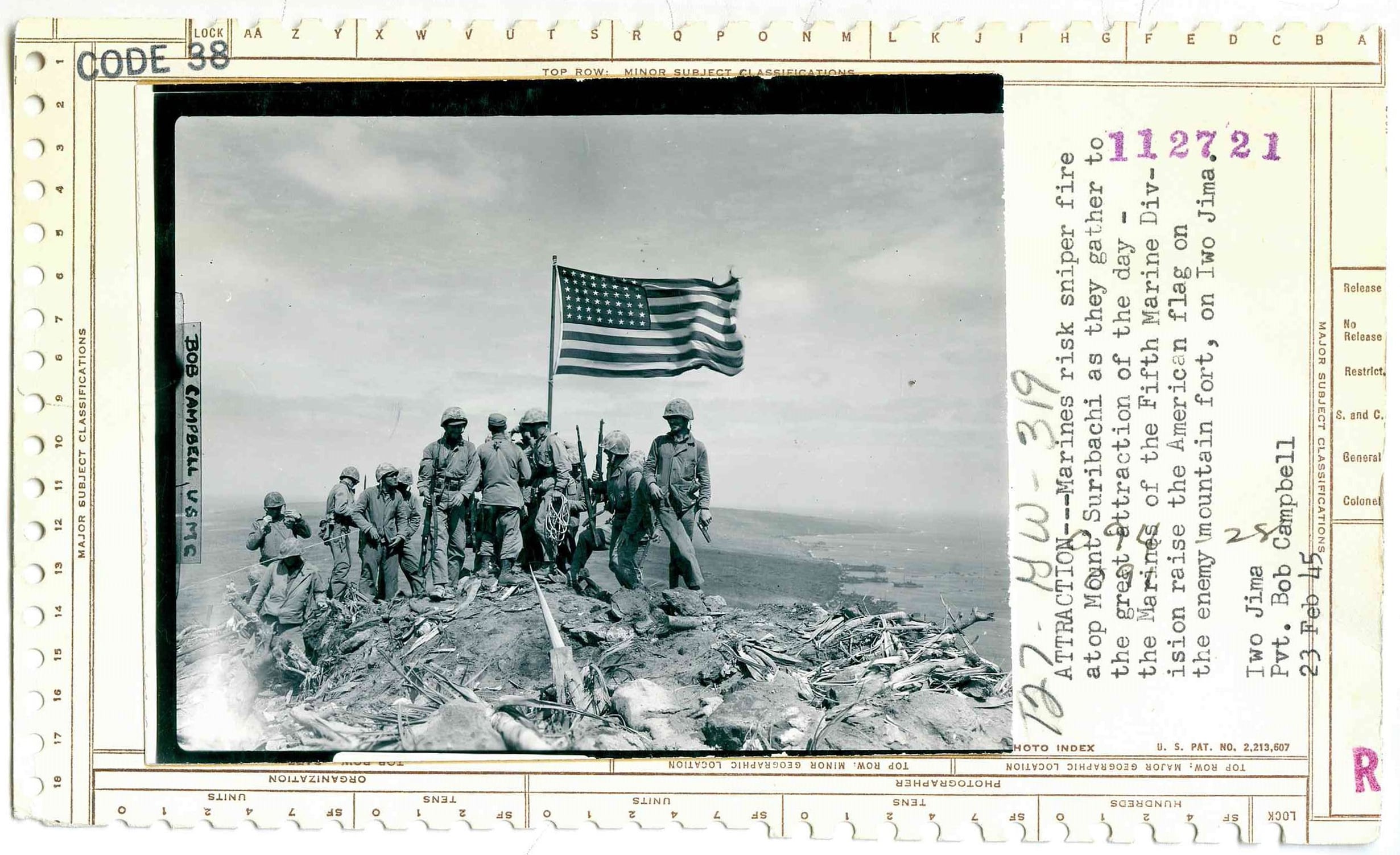
Operation Detachment (the code name for the U.S. war plan to invade Iwo Jima) was the largest U.S. Marine Corps operation ever conducted. It cost the lives of over 25,000 Americans and Japanese.
However, most people do not realize that, tragically, the decision of the Joint Chiefs of Staff to seize Iwo Jima cost thousands of American lives for an objective that never fulfilled its intended purposes — a truth that historians failed to address for more than six decades.
The valuable lessons of Iwo Jima lie covered and dormant, buried under myth and legend.
A more detailed look at the planning for Iwo Jima demonstrates that the service rivalry resulting from the dual advance of the U.S. Navy and the U.S. Army in the Pacific heavily influenced the decision to initiate Operation Detachment.
Rather than waiting for the Army to complete its seizure of the Philippines in 1944 and release the ground forces needed to invade Formosa, the Navy made a hasty change in plans to seize Okinawa instead and thereby continue its northward advance.
Although Okinawa satisfied the Navy’s purposes, the objective of seizing Iwo Jima actually derived from U.S. Army Air Forces strategy. The intent was to safeguard the B-29 Superfortresses by providing fighter escort support from Iwo Jima.
Combining the objectives of Okinawa and Iwo Jima ensured approval by the Joint Chiefs of Staff. This alliance between the Navy, which was seeking to outflank the army, and the Army Air Forces, which wanted to prove the case for strategic bombing in order to create an independent postwar air service, satisfied their respective interests.
However, the U.S. Marine Corps, which paid by far the heaviest price for carrying out Operation Detachment, remained excluded from the decision-making process. When fighter operations from Iwo Jima failed, the military sought additional reasons to justify the costly battle, and historians have perpetuated these illusions.
Combat on Iwo Jima was perhaps the most brutal, tragic and costly in American history. Scholars have never yet sufficiently addressed the strategic decisions and ensuing justifications for Iwo Jima.
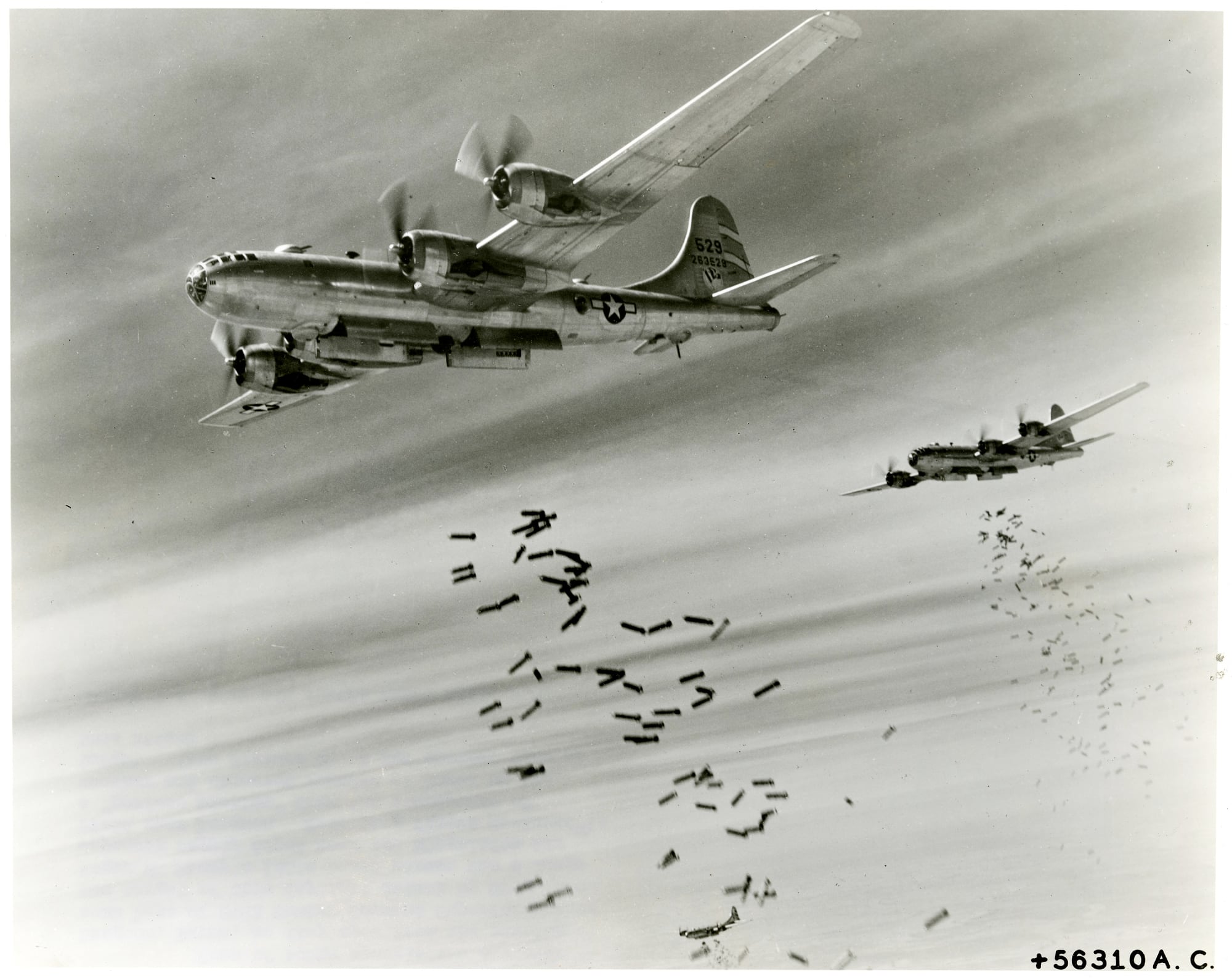
The major weakness in the conduct of the Pacific War was in the inability of the Joint Chiefs of Staff to unify the efforts of the Army and Navy. Consequently, the Army, Navy and Army Air Forces conducted separate and competing campaigns against Japan.
Operation Detachment derived from Army Air Forces strategy, brought about by the need to improve disappointing B-29 operations, in an atmosphere of fierce competition, and with the fear of losing potential autonomy. At the cost of thousands of lives, Operation Detachment provided an air base of questionable value, with a price that neither the public nor the military could swallow.
Almost every book, journal article, encyclopedia entry and website that addresses the battle justifies the nearly 7,000 American dead with the “emergency landing” theory. Essentially, the theory argues that 2,251 B-29 Superfortresses landed on Iwo Jima and each carried eleven crewmen; accordingly, Operation Detachment saved the lives of 24,761 Americans.
However, the emergency landing theory does not stand up to scrutiny. The absurdity of the claim demonstrates the extent to which the battle has been misunderstood.
Rather than saving the lives of U.S. airmen, Operation Detachment may have actually detracted from the U.S. war efforts to defeat Japan. If we view the Pacific War through the lens of Iwo Jima, its most important lessons may emerge.
Fourteen costly days after the Marines landed on Iwo Jima, engineers from the 2nd Separate Engineer Battalion and the 62nd Naval Construction Battalion were working busily to repair Airfield No 1.
Japanese and Americans still fought fiercely along the forward edge of the battle area, and there remained a constant threat of indirect fire to the Marines on the airstrip. A few observation planes had utilized Iwo Jima since late March. Consequently, a short wooden control tower had been constructed on the airfield, just large enough to hoist a single Marine observer 20 feet above the airfield.
In the aftermath of March 4, Airfield No. 1 received an unanticipated message from one of the naval support ships. Apparently, a B-29 had run short of fuel, was headed toward Iwo and planned to land.
The predicament must have excited the ground crew. There was no time to coordinate a cease-fire of artillery or naval gunfire; the silhouette of the B-29 could be seen making a slow approach on the Pacific horizon.
“Clear the airfield” is the shout that might have gone out to construction crews.
These veterans, accustomed to impromptu commands, likely scrambled to remove equipment and personnel. The massive Superfortress came onward at what must have seemed a snail’s pace to the airmen, drawing Japanese antiaircraft fire.
It continued forward and touched down on the airstrip. Marines and sailors watched in amazement as the enormous flying battleship slowed to a stop.
One Marine combat correspondent described what went through his mind as the B-29 landed: “Like a giant bird, it set down on Motoyama Airfield Number One…. The B-29 landed on hallowed ground, volcanic ash surfaced with hard clay which recently had soaked in the blood of American Marines…. These Leathernecks from your and my hometowns made it possible for the B-29 to land here. Now, those lads are buried in the shadow of Mount Suribachi, where Old Glory flies from the crest, proclaiming to all that American Marines conquered the Japs who held the formidable volcano fortress.”
When that first B-29 touched down on Iwo Jima, troops on the ground could not contain their enthusiasm. They left their covered positions to surround the bomber en masse, making for a famous photograph. The Americans on Iwo Jima deemed there was much to celebrate in this seemingly trivial event.
These men longed to understand the purpose behind the past two weeks of vicious combat. Amid the chaos of death and destruction, the Superfort had suddenly landed directly in front of them. In the first days of the battle, men argued whether the island would have any lasting military significance, but the appearance of the B-29 quelled all that.
By the end of hostilities, 36 Superforts had landed on Iwo Jima.
The euphoria surrounding these events had an immediate impact on the high commands of the Army Air Forces, Navy, and Marine Corps.
The media also publicized the B-29 landings, giving rise to legends. As the flag being raised on Suribachi assumed heroic proportions, so did the romanticism justifying the need for Iwo Jima.

The Bonin Islands certainly had strategic relevance.
They lay in a direct path of bombing raids against Tokyo. B-29 crews from the Marianas flew 14 hours at a time without a friendly airfield between Tinian and Honshu. The confinement of American airstrips to Tinian, Guam, and Saipan somewhat restricted air rescue operations to the areas near the Marianas.
In the chain of islands extending from the Marianas to mainland Japan (the Nanpo-Shoto), the Japanese had already built airfields on several islands. The Bonin Islands offered one of the most suitable sites for constructing a forward air base.
Yet, despite the benefits of having Iwo Jima in American hands, there were at least six other islands in the Nanpo-Shoto under consideration by the Joint Chiefs of Staff.
By December 1944, it was quite apparent that seizing Sulfur Island would prove difficult. In weighing the necessity of the battle, one must determine whether Operation Detachment accomplished its designed purpose, whether there were alternative ways to accomplish the same goals and what impact the seizure of Iwo Jima would have on future operations.
Part of the difficulty in probing the reasons given for Operation Detachment is that the sources are inconsistent.
In the strategy approved by the Joint War Planners, the justifications for the Bonin Islands operation were:
a. Providing fighter cover for the application of our air effort against Japan.
b. Denying these strategic outposts to the enemy.
c. Furnishing air defense bases for our positions in the Marianas.
d. Providing fields for staging heavy bombers (B-24 Liberators) against Japan.
e. Precipitating a decisive naval engagement.
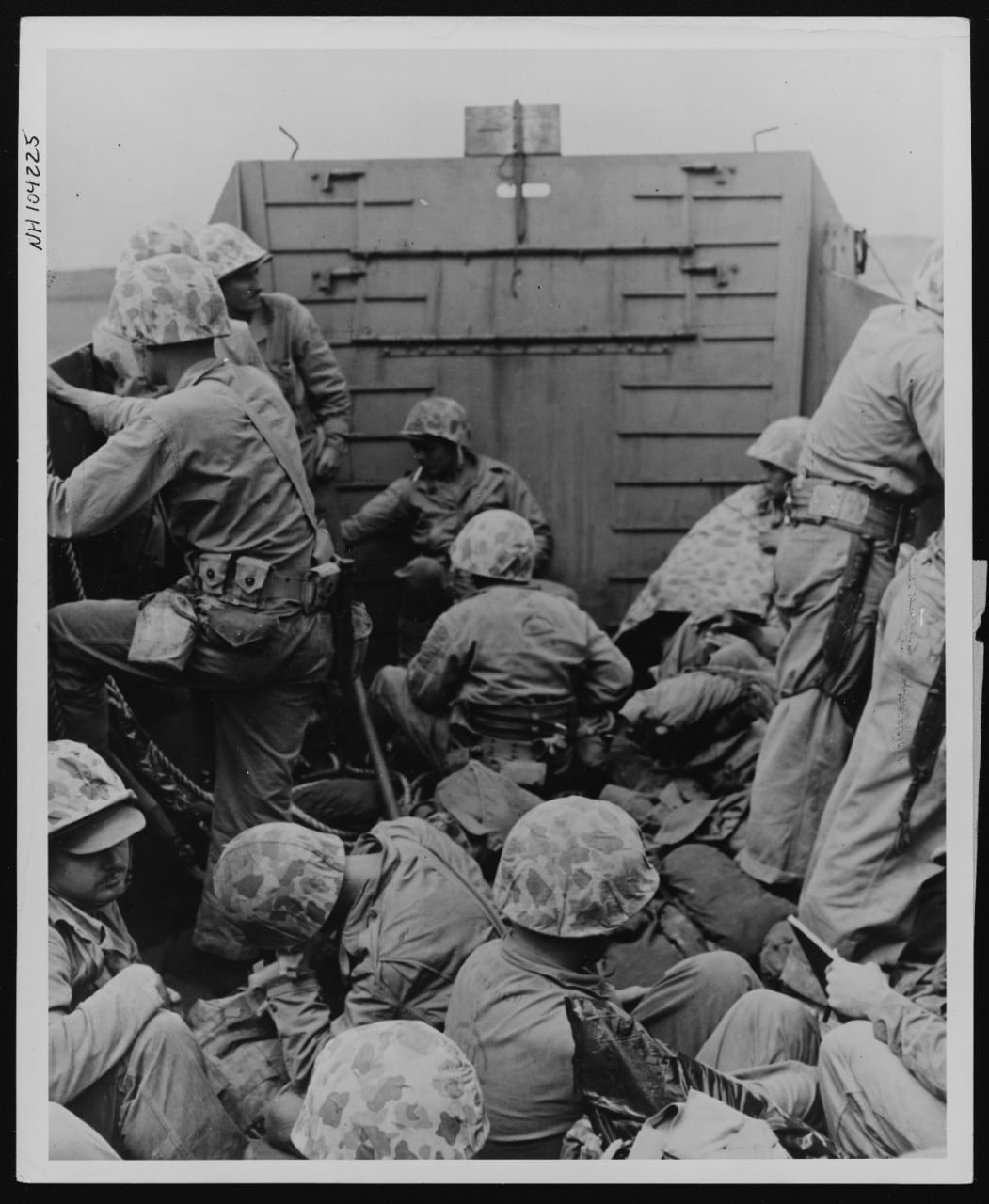
After the battle, both Fleet Adm. Ernest J. King and General of the Army George C. Marshall continued to maintain that Iwo Jima provided essential fighter cover for Superforts, but they began shifting emphasis to the B-29 landings on Iwo Jima.
In Marshall’s report to Secretary of War Henry L. Stimson, he stated, “Iwo fields saved hundreds of battle-damaged B-29s, unable to make the full return flight to their bases in the Marianas, 800 miles farther to the south.”
King argued that significantly more B-29s would have been shot down over Japan “had Iwo Jima not been available for emergency landings.” He estimated that “the lives [that would have been] lost at sea through this latter factor alone…exceeded the lives lost in the capture itself.”
Other sources have offered additional justifications for taking Iwo Jima.
An Army Air Forces publication stated that air-sea rescue units based on the island critically promoted the rescue of downed aircrews.
Adm. Raymond A. Spruance pointed out that taking Iwo Jima removed a Japanese early-warning system for Superfortress bombing raids.
Army Maj. Gen. Haywood S. Hansell Jr., commanding general of the 21st Bomber Command, stated that securing the island improved the morale of his pilots.
The official Army Air Forces history claimed that B-29s needed to run a dogleg course around the Bonins because of the threat of Japanese fighters stationed on Iwo Jima.
Over the years, scholars have accepted many of these arguments.
Many of these arguments were first raised after the battle concluded: Iwo Jima provided a base for air-sea rescue operations, the invasion stopped Japanese fighters from the island from intercepting B-29 flights, and the island was useful as an emergency landing site.
However, the principal reason for seizing Iwo Jima originated from plans to use it as a fighter base to escort B-29s bombing Japan. Before the invasion, the Navy maintained this line of reasoning, both through the military chain of command and in the press.
This was the only reason Adm. King mentioned for capturing the island in his proposal to the Joint Chiefs of Staff.
On Feb. 16, three days before the landing, Vice Adm. Richmond K. Turner stated at a press conference that the primary reason for capturing Iwo Jima was to provide “fighter cover for the operations of the B-29s which are based here in the Marianas.”
Neither King nor Turner made any mention of B-29s landing on Iwo Jima.
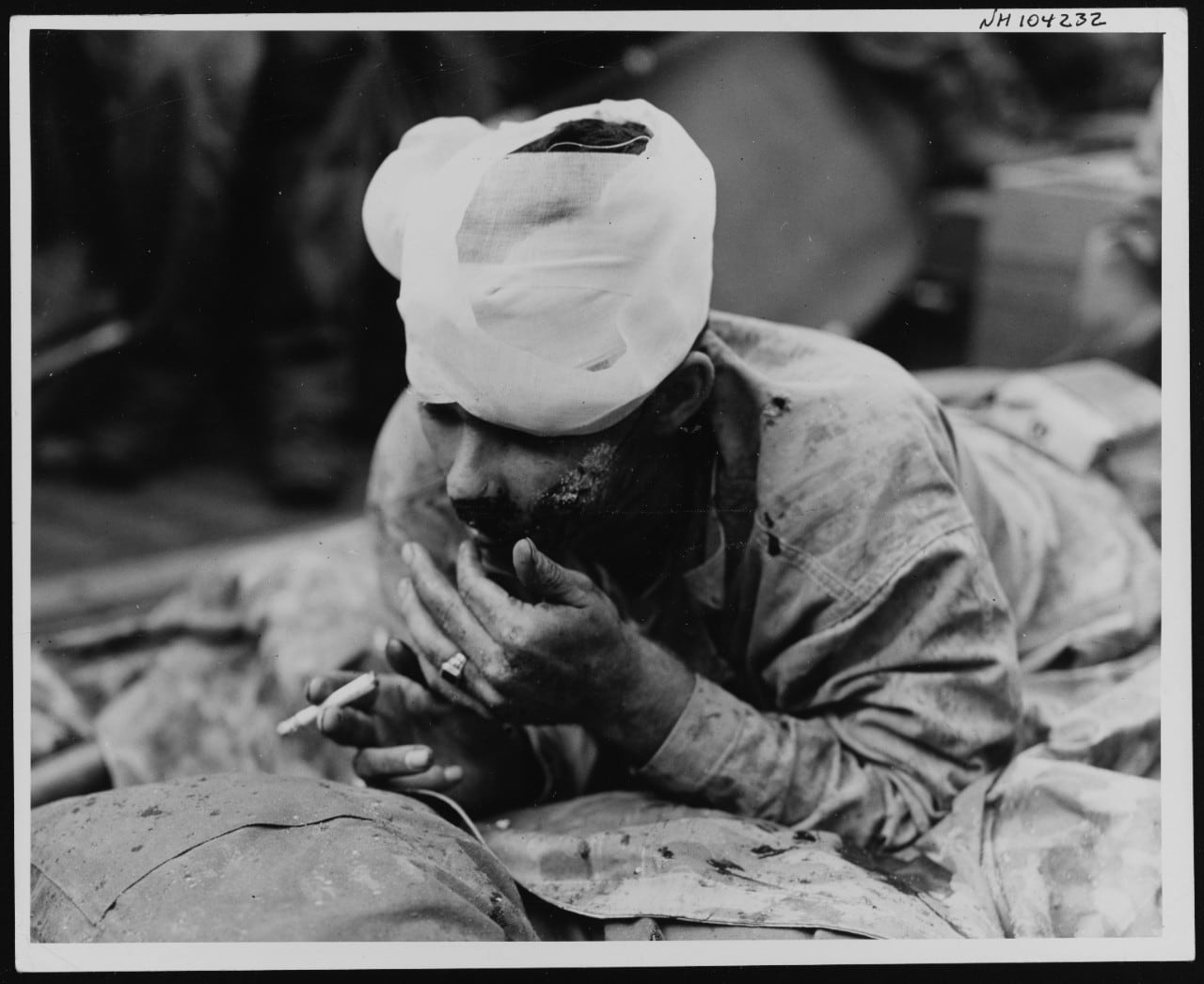
After the invasion, the Army Air Forces rotated the 45th, 46th, 72nd, 78th, 531st, 548th, and 549th Fighter squadrons from the VII Fighter Command on the island; this included at one time more than a hundred P-51 Mustang fighters.
Just the limited number of fighters in comparison to nearly a thousand B-29s in the Marianas made escorting most bombing missions impossible in the face of extensive operations.
However, the limited number of fighters was the least of VII Fighter Command’s problems. Primarily, these derived from the long distance to the objectives, the mechanical limitations of the P-51s, and harsh weather conditions over the Pacific Ocean.
The single VHF radio in each fighter had a range of 150 miles in line-of-sight circumstances. The navigation systems on the P-51, consisting of a compass, an air speed indicator, and a clock, proved grossly inadequate for the 1,500-mile trips over the Pacific. Ironically, the P-51s depended on the B-29s to escort them to and from targets.
In March 1945, when VII Fighter Command attempted practice runs from Iwo Jima to Saipan, it quickly realized that the P-51 was not adequately designed for the long trip over the Pacific (unfortunately, the Army Air Forces could not carry out these practice flights until after the island was captured).
The cramped, cold, unpressurized cockpit of the P-51 made the nine-hour round trip over ocean waters difficult for the pilots. Moreover, unlike the Superfortresses, the Mustangs often could not withstand the harsh weather. Storms caused many of the planes to crash.
The VII Fighter Command attempted to escort Superforts in early April but soon realized its task was not feasible. The command flew only three escort missions — on April 7, 12, and 14 — before terminating escort efforts.
Therefore, the Army Air Forces barely used Iwo Jima for the purpose that led to the invasion.
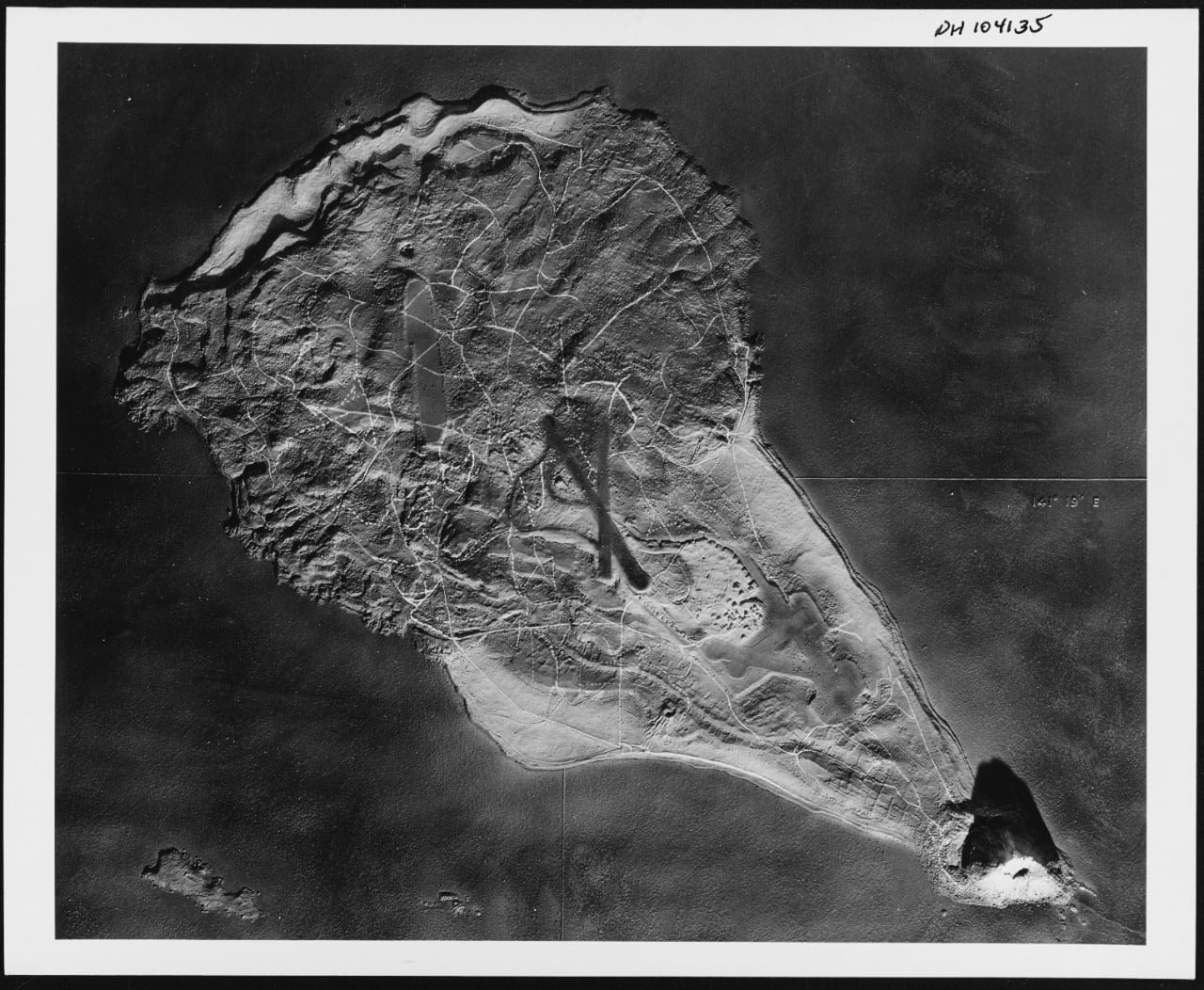
Was Iwo Jima needed, or was it duplication of effort?
Okinawa, for instance, had the capacity to provide dozens of airfields for land-based fighters, and did so. Range limitations did not allow Okinawa-based fighters to travel to Japan, but VII Fighter Command had difficulty covering that distance from Iwo Jima.
More important, carrier-based fighters routinely hit targets on Japan.
By the end of 1945, the United States had produced an unprecedented 30 aircraft carriers and 82 escort carriers, the largest assembly of naval air power in world history. Carriers from the Pacific Fleet could launch fighter escort for B-29s and recover at much shorter and safer distances than the 1,500-mile trip from Iwo Jima.
One heavy carrier could launch about as many airplanes as the P-51s stationed on Iwo Jima. It seems irrational to think that the airfields on Iwo, with poor logistics because of no port facility, could provide air support that carriers could not.
Initially, when the B-29s began operations in November 1944, the Navy agreed to give carrier-based fighter support to the Army Air Forces. Because Navy air power was tied up in other operations that month, the proposal eventually fell through. The Army Air Forces decided to go in alone rather than wait for Navy fighter support.
The concept of joint aerial operations never again materialized. Increased cooperation would have proven more beneficial than relying on P-51s stationed on Iwo Jima.
Ironically, the need for fighter escort had already become questionable before the battle for Iwo Jima reached its climax.
In early March, Army Air Forces Gen. Curtis LeMay switched from the usual B-29 tactic of high-altitude precision daylight bombing to low-altitude night firebombing raids against Japan.
According to Maj. Gen. Hansell, this increased bomb loads since “in daylight the force had to fly in formation and operate at high altitude to defend itself against Japanese fighters,” restricting tonnage.
Japan’s night air defenses offered feeble, ineffective resistance. LeMay was more concerned about damage from friendly fire than from Japanese air defenses. Consequently, he stripped the B-29s of their protective machine guns and gunners, making room for larger payloads. Only later did the general reinstall a portion of the B-29 defensive systems, and this was simply to boost morale.
Initially, LeMay worried that bombing runs at 5,000 feet would increase Superfortress losses, but the results surpassed his expectations. Not only did the firebombing destroy the desired targets but the devastation gutted large portions of Japanese cities, killing thousands of people.
With the new bombing techniques, the fighter cover stationed at Iwo Jima became largely irrelevant.
P-51s stationed at Iwo Jima did serve in other capacities.
B-29s guided fighters to Japanese airfields in Nagoya, Osaka, Kobe, and Tokyo from April through August 1945. Most missions took place in June and July, when weather was favorable.
However, by the time VII Fighter Command’s operations picked up, the Americans had already crushed Japanese air power. Brig. Gen. Ernest Moore, who headed VII Fighter Command, lamented the lack of opposition, stating: “I hope [Japanese fighters] will at least give us a little competition, because it is not very encouraging to fly that far in hopes of combat and not get it.”
During early operations from April through June, P-51s flew 832 sorties, but the Army Air Forces only considered 374 successful. The VII Fighter Command claimed that it destroyed 74 enemy planes and damaged another 180 on the ground.
The results were meager at best. In the words of the Army Air Forces historian, “the total P-51 effort was not very fruitful.”
A more recent Air Force study found the contribution of VII Fighter Command superfluous.
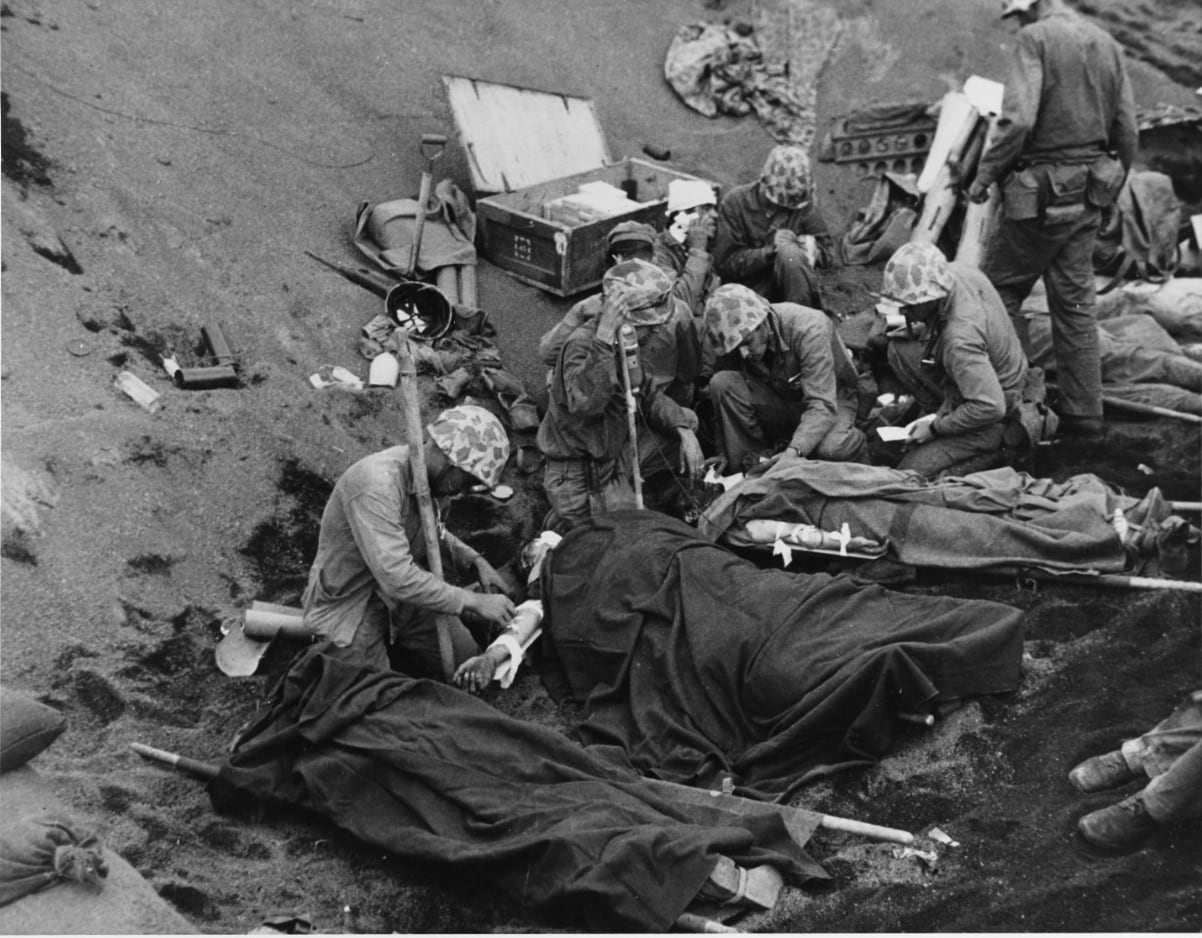
Denying the Bonin Islands to the Japanese was another reason given for Operation Detachment.
In 1945 the Japanese airfields on Iwo Jima constituted a threat, but U.S. forces bypassed many islands with similar airfields as they moved toward Japan.
The foremost example of a bypassed enemy stronghold was the island of Truk in the Caroline Archipelago, southeast of Guam. Truk boasted major Japanese air and naval bases.
Initially, the Joint Chiefs of Staff designated Truk as a primary U.S. objective.
However, after consideration, the chiefs determined that the cost of seizing Truk outweighed its usefulness (or perhaps there were not enough forces available to pursue that course).
The Army Air Forces and Navy successfully neutralized the island with frequent aerial bombardments and a naval blockade.
In a similar manner, the Joint Staff Planners determined in 1943 that the Bonin Islands could be neutralized and were not worth the cost of seizing them.
Neutralizing the Bonins, incidentally, did not require seizing Iwo Jima.
Military strategists also sought to reduce the threat of enemy air attacks on the Marianas. The Japanese had launched several air attacks on Saipan, using planes that probably refueled in the Bonin Islands.
However, these attacks came infrequently and were only marginally effective.
From early November 1944 through early January 1945, the Japanese launched only seven attacks. They destroyed 11 B-29s and did substantial damage to another eight.
The Americans destroyed 37 Japanese fighters in the process.
When the XXI Bomber Command stepped up bombing missions on Iwo Jima in January, the attacks ceased.
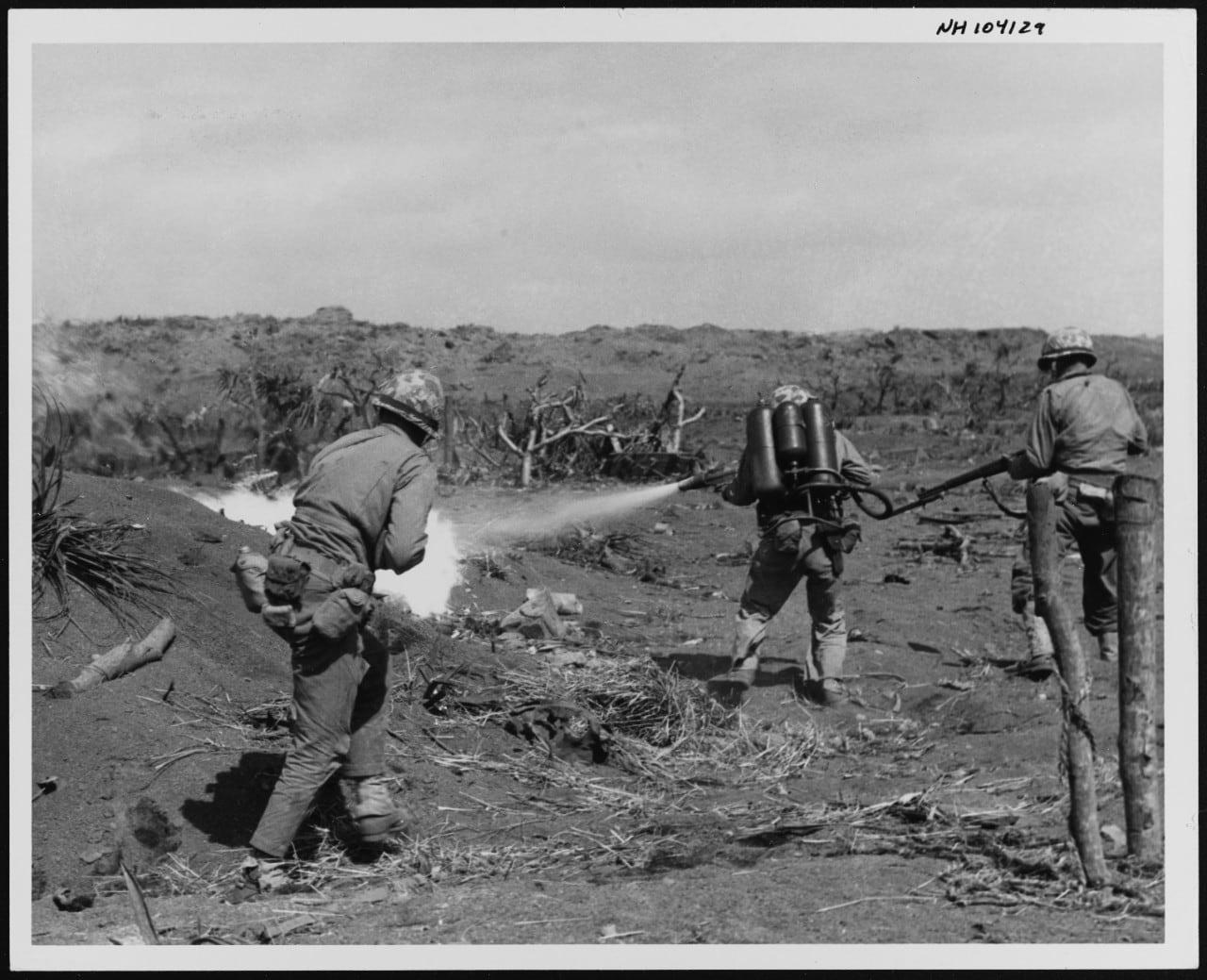
Essentially, the damage caused to the Iwo airfields and related facilities through aerial and surface bombardment, combined with the growing shortage of Japanese planes, pilots, and fuel, ensured that airstrips on Iwo Jima from that point had little offensive usefulness for Japan.
Considering the circumstances, the Japanese could not afford sustained losses in fuel, planes, and pilots against long-range targets in the Marianas. They would only risk a handful for flights to Iwo Jima.
Army Air Forces records indicate that the average number of enemy planes sighted on the island from January through early February was only 13, and those planes were likely running last-minute supplies to Gen. Tadamichi Kuribayashi’s ground forces.
Even if the Japanese could have continued attacks against Saipan or Tinian by refueling at Iwo Jima, further actions would not have proven successful.
Daylight raids gave the Americans easy warning, and the Japanese fighters had poor night-fighting capability.
As had been the case at Pearl Harbor, air attacks on the Marianas demonstrated the Japanese ability to utilize daring and surprise against an overconfident enemy. Once the Japanese lost this element of surprise, further raids became inconsequential.
In a letter to his commanding officer, Gen. Henry H. “Hap” Arnold, in November, Maj. Gen. Hansell said that the Japanese preferred to attack under a full moon, exactly what the Japanese continued to do through early January.
Not only did Hansell predict the periods of attack but he also understood Japan’s current air tactics and prepared the XXI Bomber Command to meet the threat.
Even the Army Air Forces’ history concluded: “Japanese raids against B-29 bases, though troublesome, were not important enough alone to have justified the cost of capturing Iwo Jima.”
By 1945, Iwo Jima had little offensive relevance to the Japanese.
In the words of Japanese officers: “Our first line Army and Naval air forces had been exhausted in the recent Philippines Operation. The anticipation to restore our air forces, bringing their combined number to 3,000 planes, could materialize only by March or April and even then, mainly because the types of airplanes and their performance proved to be impracticable for operations extending beyond 550 miles radius, we could not use them for operations in the Bonin Islands area.”
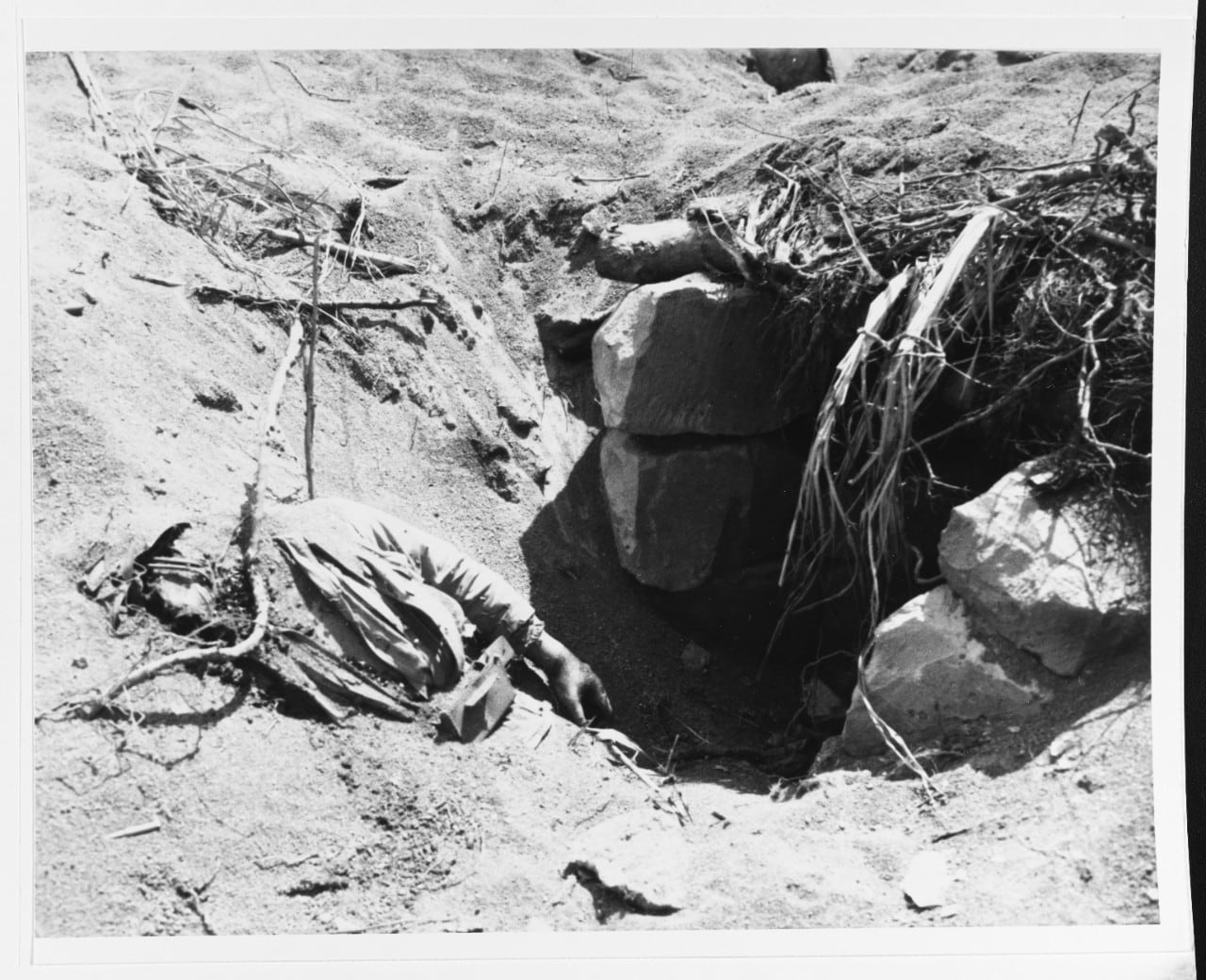
The Japanese wanted to defend Sulfur Island to deny its use to the Americans. Gen. Kuribayashi considered destroying the island through demolitions, to sink it into the sea or cut the central portion in half, to severely damage the airfields.
Although Kuribayashi’s ideas about destroying Iwo Jima may have been whimsical, he considered the island more of a liability than an asset. When the continued maintenance of the Motoyama airfields detracted from his defense construction efforts, an irritated Kuribayashi sent the following communiqué to Tokyo: “We must avoid constructing hopeless airfield.”
In American hands, Iwo Jima did provide an intermediate airfield for staging bombing missions against Japan. B-29s could extend their range and slightly increase their payloads by refueling there.
However, the vast majority of Marianas-based B-29s never used Iwo Jima for this purpose. Quite simply, the B-29s could hit nearly every desired target within the range already provided by bases in the Mariana Islands.
Furthermore, landing at Iwo Jima to slightly increase payloads was not pivotal. The XXI Bomber Command dropped so many bombs under LeMay’s direction that it ran short of incineration ordnance. The Army Air Forces had little need to increase payloads with a time-consuming stop at Iwo Jima.
Additionally, the size of many sorties — over 500 planes at times — made a stopover at Iwo Jima difficult, if not impossible.
To complicate matters, all supplies and materiel had to be unloaded at Iwo Jima without a port. This made getting fuel and ammunition onto Sulfur Island dangerous and unproductive.
Some missions used the island as a staging area, and doing so improved bombing efficiency, but the staging area did not provide critical aid to the war effort.
U.S. planners initially anticipated that an assault on the Bonins could force the Japanese navy out of hiding and precipitate the decisive naval engagement the U.S. Navy had long desired.
However, the naval situation changed during the planning for Operation Detachment. In late October 1944, the Japanese and American navies clashed at the Battle of Leyte Gulf. The U.S. Navy destroyed the majority of Japanese capital ships in the series of engagements that followed.
Precipitating a decisive naval engagement by attacking the Bonins then became a moot point.
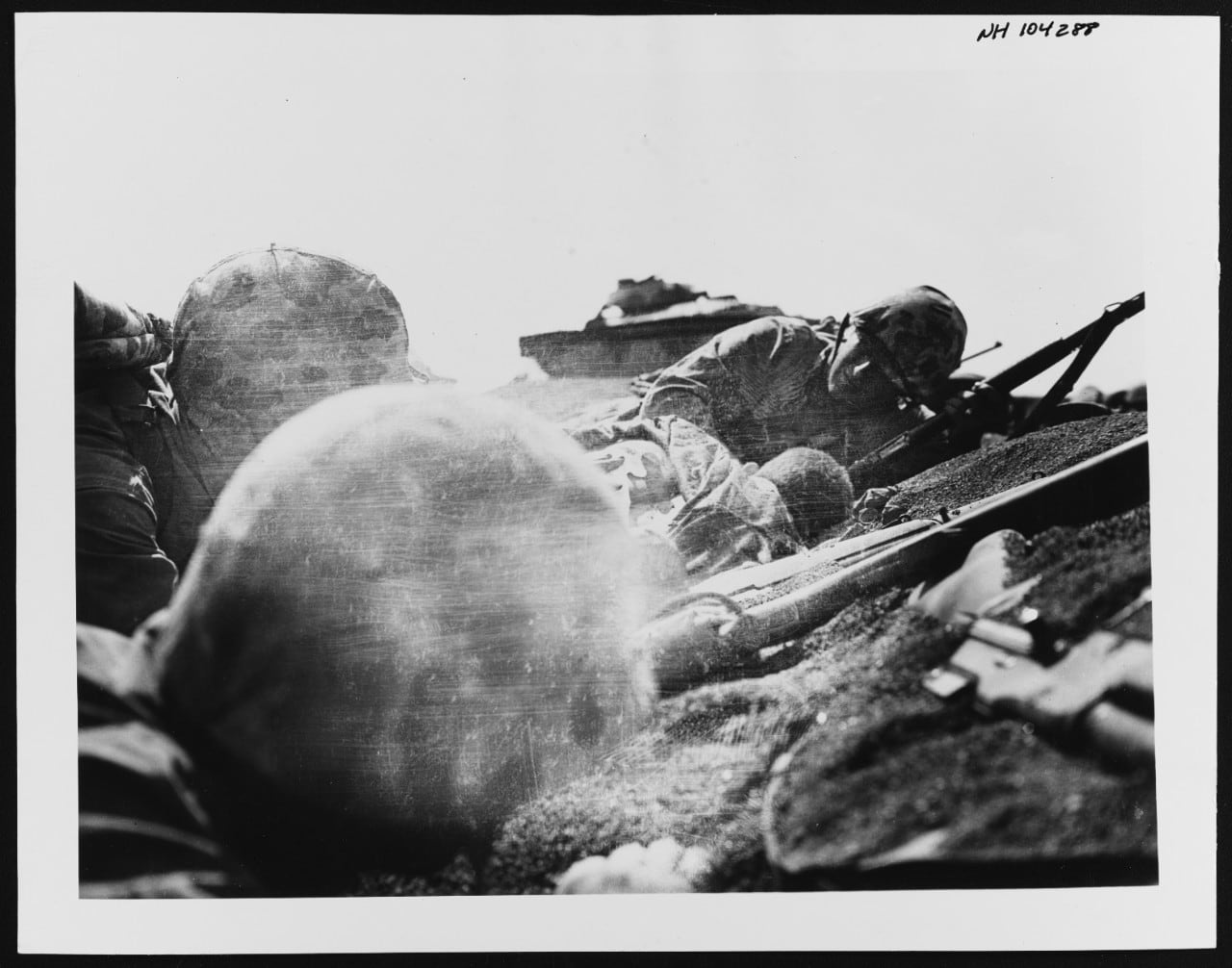
Long after the invasion, Adm. Spruance reasoned that capturing Iwo Jima deprived the enemy of an early warning location. However, Iwo Jima was only one among several islands in the Nanpo-Shoto chain that could radio the mainland about incoming air raids.
Seizing one island did not negate Japan’s warning capabilities on the others.
The Japanese-held island of Rota, lying roughly midway between Guam and Tinian, provided an excellent example of the Japanese early warning system. Less than 50 miles from either island, the garrison on Rota actively collected and transmitted intelligence information on U.S. bombing missions.
The Joint Chiefs of Staff knew of these capabilities yet never found it necessary to invade Rota.
Adm. Spruance’s 1945 after action report to his superiors, Adm. Chester W. Nimitz and Adm. Ernest J. King, stated only one requisite for Operation Detachment: “to operate with greatest effectiveness and with minimum attrition, fighter cover for the long range bombers was required at the earliest practicable time.”
Yet when interviewed for his 1974 biography, Spruance argued that the battle was necessary to stop Iwo Jima’s advance-warning system — specifically, its radar facility. Regardless of how he arrived at this conclusion, Iwo Jima’s radar facility, with its range of around 60 miles, did not impede B-29 operations.
In fact, the most effective way the Japanese could predict a U.S. raid did not come from radar but through intercepting American radio messages. This widely practiced method gave Japan four to five hours’ advance notice of an impending attack, about two to three hours earlier than could have been relayed by the radar on Iwo Jima picking up the bombers in flight.
One historian succinctly stated the ineffectiveness of such countermeasures:
For the Japanese, even this margin (five hours) was not of much help — partly because the information, though timely, was too general. Unless they could pinpoint the target of a raid, the fighter commanders were reluctant to send their planes aloft; fuel was in such short supply that every drop was precious. Confirmation from radar and other elements of the system was necessary to complete the warning cycle and justify scrambling planes. As the B-29 raiders bore down on the islands, however, the limitations of Japanese communications facilities combined with geography to put the defense seriously behind schedule.
Even if the primitive radar on distant Iwo Jima alerted Japan of incoming raids, the garrison could not pinpoint the American targets. Consequently, the Japanese failed to intercept the majority of these missions.
The radar on Iwo Jima became even less significant in March, when the weakness of Japanese night air defenses prompted General LeMay to take the drastic measure of stripping defensive machine guns from B-29s to increase the weight of their payloads.
With Japanese air defenses already so ineffective, shutting down the radar facility on Iwo Jima did not warrant invasion.
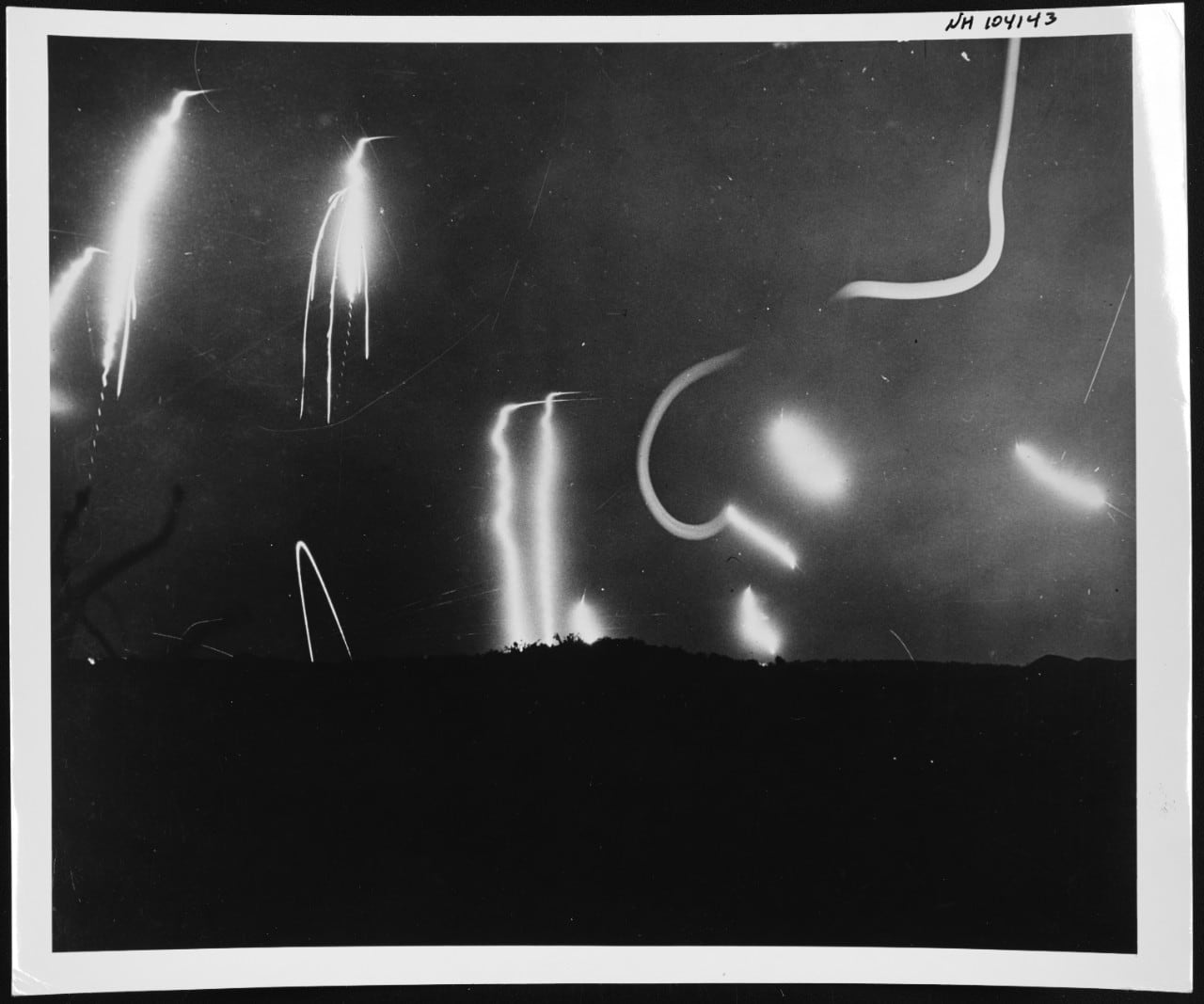
Army Air Forces Maj. Gen. Hansell claimed that one of the primary benefits of Operation Detachment was to improve B-29 pilot morale. When crews from the XXI Bomber Command began their first flights in November, they did so in planes in which they had little experience.
Pilots flew over 3,000 miles round-trip in some of the harshest weather conditions on the globe. Aircrews attempted precision bombing at high altitudes over cloud cover.
The results were not very successful.
Gen. Hap Arnold worried that continued failures would jeopardize his autonomous command of the Army Air Forces. Consequently, he exerted tremendous pressure on the XXI Bomber Command to perform, sacking Hansell, the commanding general, in January 1945.
Though morale in the Marianas was probably low in February, it must have picked up again in March after LeMay changed to more successful tactics and began fixing maintenance problems with the aircraft.
Securing an intermediate air base at Iwo Jima certainly improved aircrew confidence even further — how much is uncertain — but even so, a marginal improvement in airmen’s morale does not justify the thousands of lives lost at Iwo Jima.
One unquestionable benefit of Iwo Jima’s airfields was their direct contribution to air-sea rescue efforts, but this only affected a small number of aircrews. The Army Air Forces stationed an air-sea rescue unit as one of the first detachments on Iwo Jima.
The average rescue rate from November 1944 through February had been around 34 percent. After the capture of Iwo Jima, this rate rose to 61 percent.
However, air rescue units stationed on Iwo Jima were only minor players in the rescue of B-29 crews. Although the Army Air Forces established an additional air rescue base on Okinawa in July, naval efforts in the Nanpo-Shoto — its Dumbos, its surface craft, and its submarines — played the biggest recovery role.
Applying the average rescue rate before Iwo Jima’s capture through the entire period, combined air-sea rescue operations saved an additional 223 airmen over the previous rate.
Iwo Jima was not solely responsible for this increase, however. The VII Fighter Command’s air-sea rescue unit on Iwo Jima saved 57 airmen during the entire war.
Although Operation Detachment increased the performance of rescue operations, the number of American lives saved pales in comparison to the number lost in capturing the island. Additionally, the Bonin chain offered more islands than Iwo Jima that could have served as an air rescue base.
In his report to the secretary of the Navy, Adm. King maintained that Iwo Jima was the only island in the Bonins that “lends itself to the construction of airfields.”
In the official Marine Corps history, Whitman S. Bartley carefully sidestepped this issue by stating that Iwo Jima “was the only island that could support a large number of fighter aircraft.”
These statements failed to acknowledge that Iwo Jima was not the only island in the Bonins that provided landing facilities.
Both Chichi Jima and Haha Jima had sizable airfields already built — a fact that has not received enough historical scrutiny.
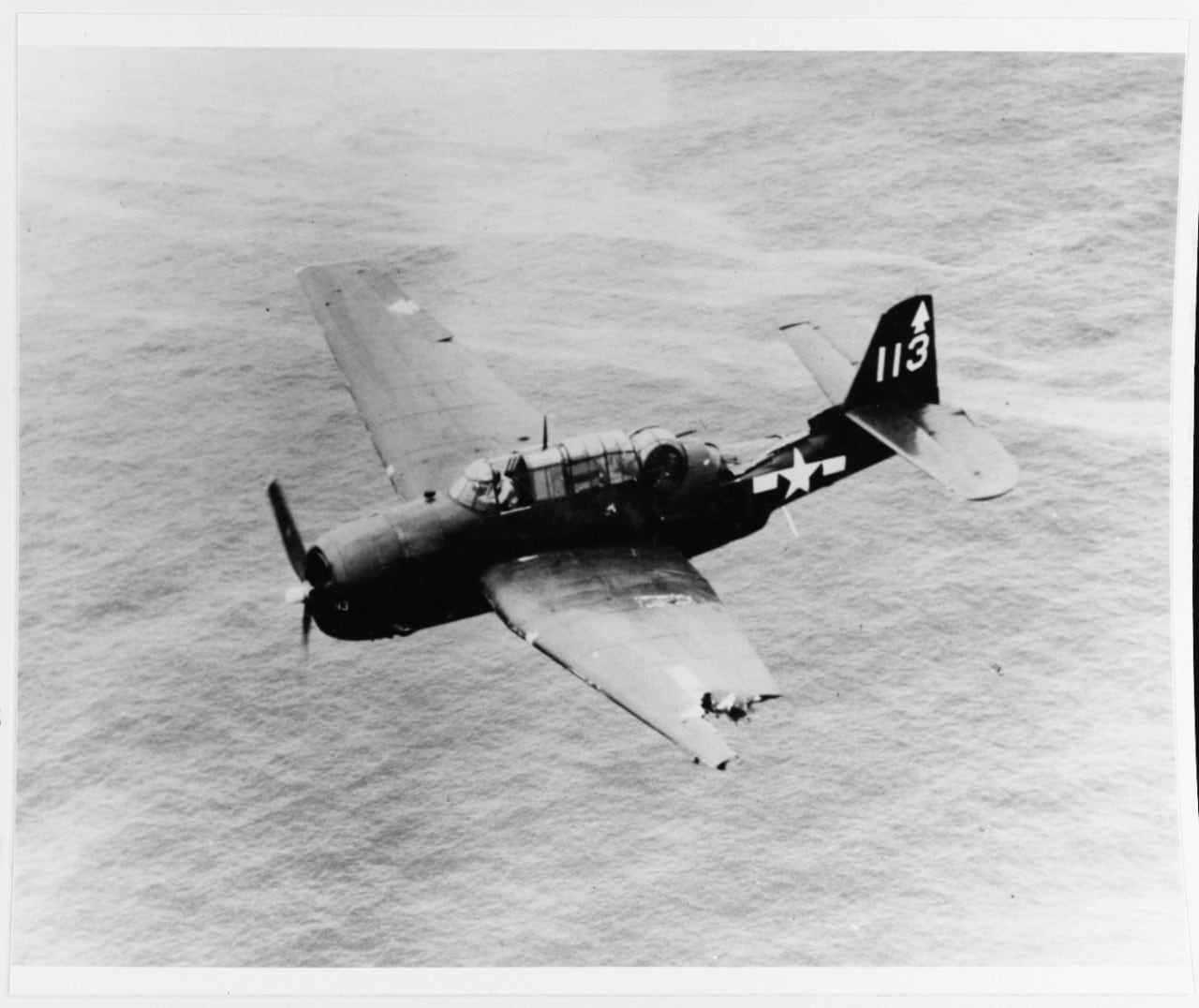
Although the unevenness of Haha Jima’s airfield limited its employment, the island of Chichi Jima had an excellent port facility and fresh water, and was 150 miles closer to Japan (510 miles from Tokyo while Iwo Jima was 660 miles from Japan’s capital).
Chichi Jima literally means “father island,” and until Kuribayashi transferred his headquarters to Iwo Jima, the Japanese considered Chichi Jima the cornerstone of the Bonin Islands in terms of both utility and defense. The mountainous terrain, steep cliffs, and limited landing areas surrounding Chichi Jima made it a difficult target for amphibious assault.
American intelligence incorrectly assumed that most of the Japanese 109th Infantry Division was still stationed there.
In reality, Kuribayashi had transferred the majority of his manpower and materiel to Iwo Jima. Chichi Jima acted mainly as a communications and logistics facility supporting Iwo Jima and the other Bonin Islands.
Chichi Jima provided a valid and useful base to support both land and sea operations. The mountainous island had heavy naval guns surrounding the port, bristled with antiaircraft guns, and had few landing beaches. Although it is difficult to imagine a defense more thoroughly impregnable than Iwo Jima, the defenses on Chichi Jima were certainly formidable.
However, perhaps due to confidence in the island’s geography, the 15,000 Japanese defenders of Chichi Jima (6,000 less than on Iwo Jima) did not start seriously organizing their defenses for repelling an invasion until July 1945, four months after the assault on Iwo Jima.
Chichi Jima proved enticing to the U.S. Navy, and planners devised a way to seize the island, code-named Operation Farragut, in June 1944.
The largest airfield on Iwo Jima before its capture was approximately 4,245 by 425 feet, while the one at Chichi Jima was 2,900 by 900 feet, with water at both ends of the runway. This airstrip was built on landfill placed in the water between two rocky outcroppings of the island, which accounts for its unusual width.
Fighters like the P-51 required less than 1,000 feet to take off or land, but B-29s typically used over 8,000 feet of runway. Planners estimated that it would take two construction battalions 55 days for each 500-foot extension to allow B-29s to use Chichi Jima’s runway.
The Navy formulated a plan to create an advanced naval base on the island in August 1944, which included a 4,000-foot fighter strip and an alternative plan for a 6,000-foot medium bomber airfield. (B-29s made emergency landings on Iwo Jima’s shorter runways.)
Capturing the island would have satisfied several U.S. objectives, including providing an airfield for fighter support and air-sea rescue, but making the airfields suitable for B-29s in a timely fashion would have been difficult.
It is hard to speculate on the available options in hindsight, but to deny that there were other landing facilities in the Bonin Islands misrepresents the choices available.
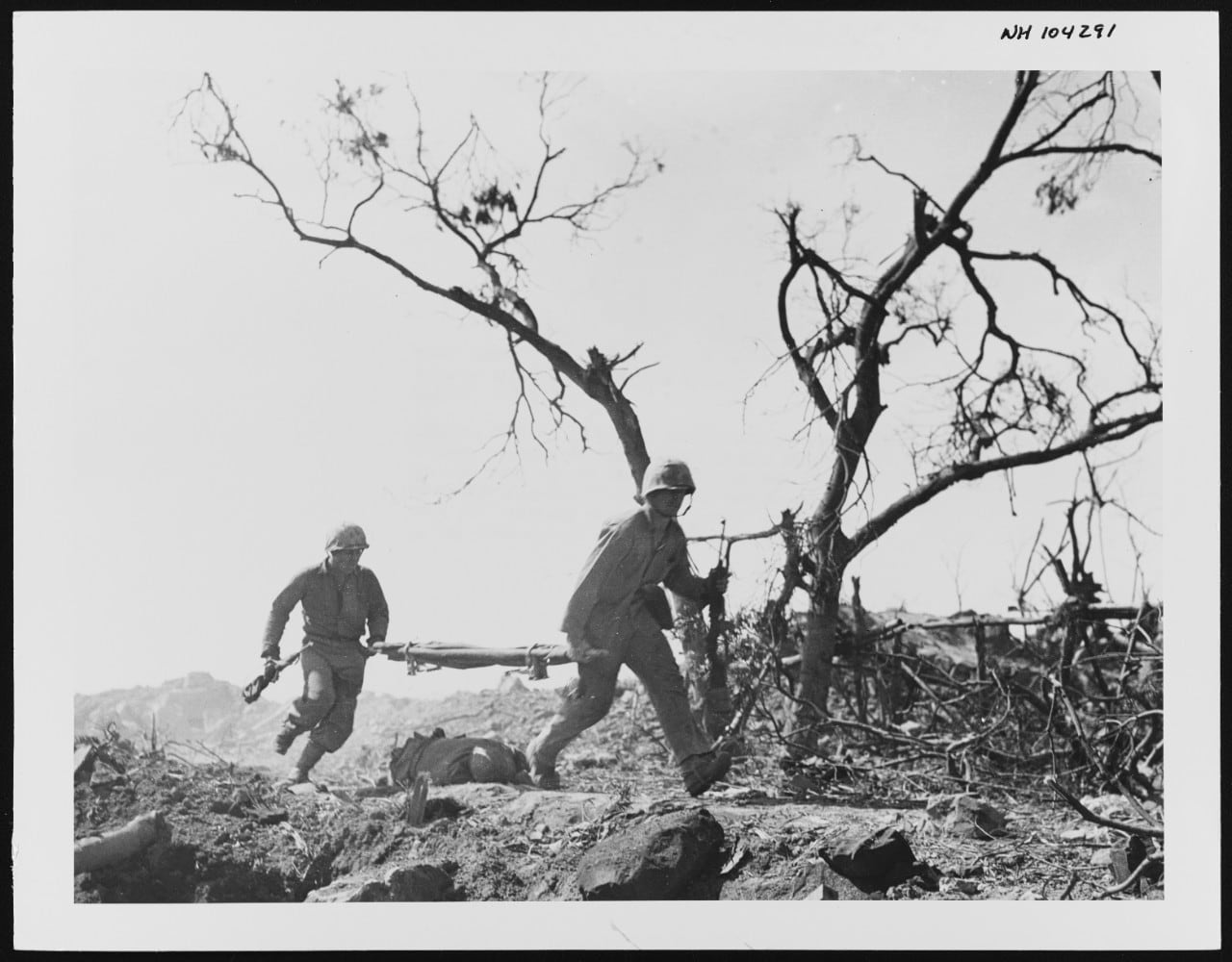
One common argument for the invasion contends that Japanese fighters on Iwo Jima threatened B-29 flights over the Bonins.
This reasoning has two major weaknesses. First, the Japanese did not station fighters permanently on Iwo Jima. The lack of a port facility on the island made logistics arduous, which relegated the airfields to staging and refueling purposes. Before June 1944, the Japanese primarily used two of Iwo Jima’s airfields as a waypoint between Honshu and the Mariana Islands.
After the United States seized the Marianas in June 1944, Iwo Jima’s usefulness to the Japanese greatly diminished, and the island airfields had little relevance to defending Japan from B-29 attacks.
Iwo Jima’s distance from Tokyo, which made it impossible, given the time constraints, to get fighters from Honshu to Iwo Jima and intercept B-29s, even with several hours’ advance notice. Under the circumstances, it just was not possible for Japanese interceptors to react to unanticipated flights over the Bonins.
Likewise, the supposed “dogleg course” that some historians have maintained had a negative effect on bomber operations has little credibility. Bombers simply flew in formation to a point opposite Iwo Jima and then proceeded on an individual basis to the Marianas from that point. While not flying directly over Japanese-held Iwo Jima was prudent, it did not hinder operations.
Even if the Japanese had attempted to predict a B-29 mission and sent a few fighters to Iwo Jima for an ambush, those Zeroes would have been highly susceptible to bomber attack from the Marianas. The airfields on Iwo Jima could be (and were, by January 1945) neutralized by repeated aerial bombardment.
Most important, it does not appear that there was ever a significant threat of B-29s being harassed over Iwo Jima. From August 1944 through February 1945, 2,800 B-24 Liberator sorties flew directly over Iwo Jima to bomb the airfields, and only 9 were shot down by either enemy fighter or anti-aircraft fire.
Considering that defenses on Iwo Jima could incapacitate less than half a percent of the planes that attacked it, simply flying past the island at 30,000 feet posed little danger.
The official Army Air Forces history failed to mention even a single instance of a B-29 shot down near the island.
Its authors declared that “the idea of seizing the island derived less from its menace while in Japanese hands than from its potential value as an advanced base for the 20th Air Force.”
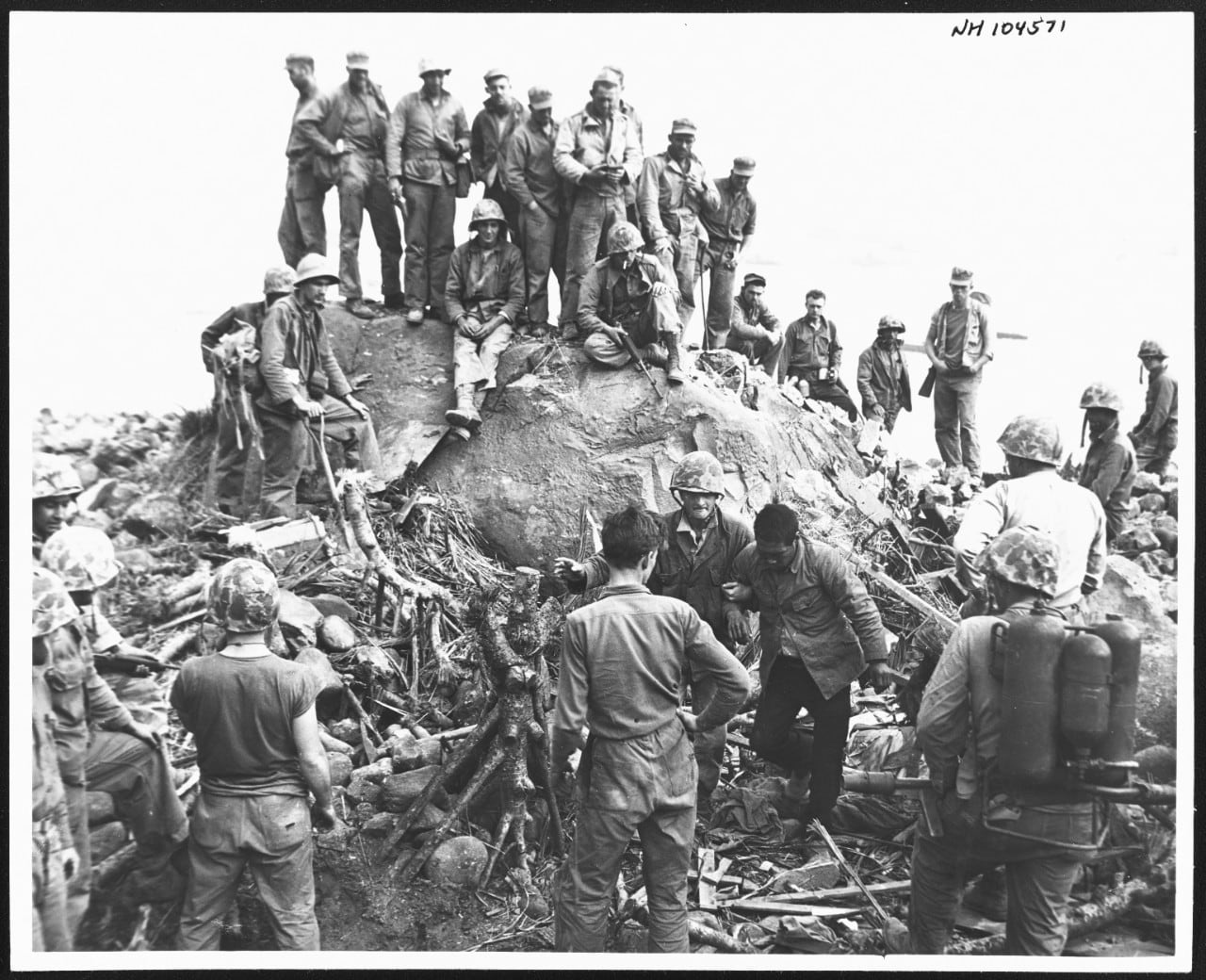
After Iwo Jima had failed to fulfill its purpose as a fighter escort base, the military presented several other justifications for Operation Detachment.
Some of those reasons have more validity than others; none outweighs the tremendous cost incurred in capturing the island.
Initially, at least, there was public criticism about the need for Iwo Jima.
Writing in Newsweek, Adm. William V. Pratt, a retired chief of naval operations, summarized the situation on the home front: “There has been a certain amount of public criticism over this expenditure of manpower to acquire a small, Godforsaken island, useless to the Army as a staging base and useless to the Navy as a fleet base. The public wants to know if the occupation of Iwo Jima was a military necessity and wonders if the same sort of airbase could not have been reached by acquiring other strategic localities at lower cost.”
That assessment rings true today.
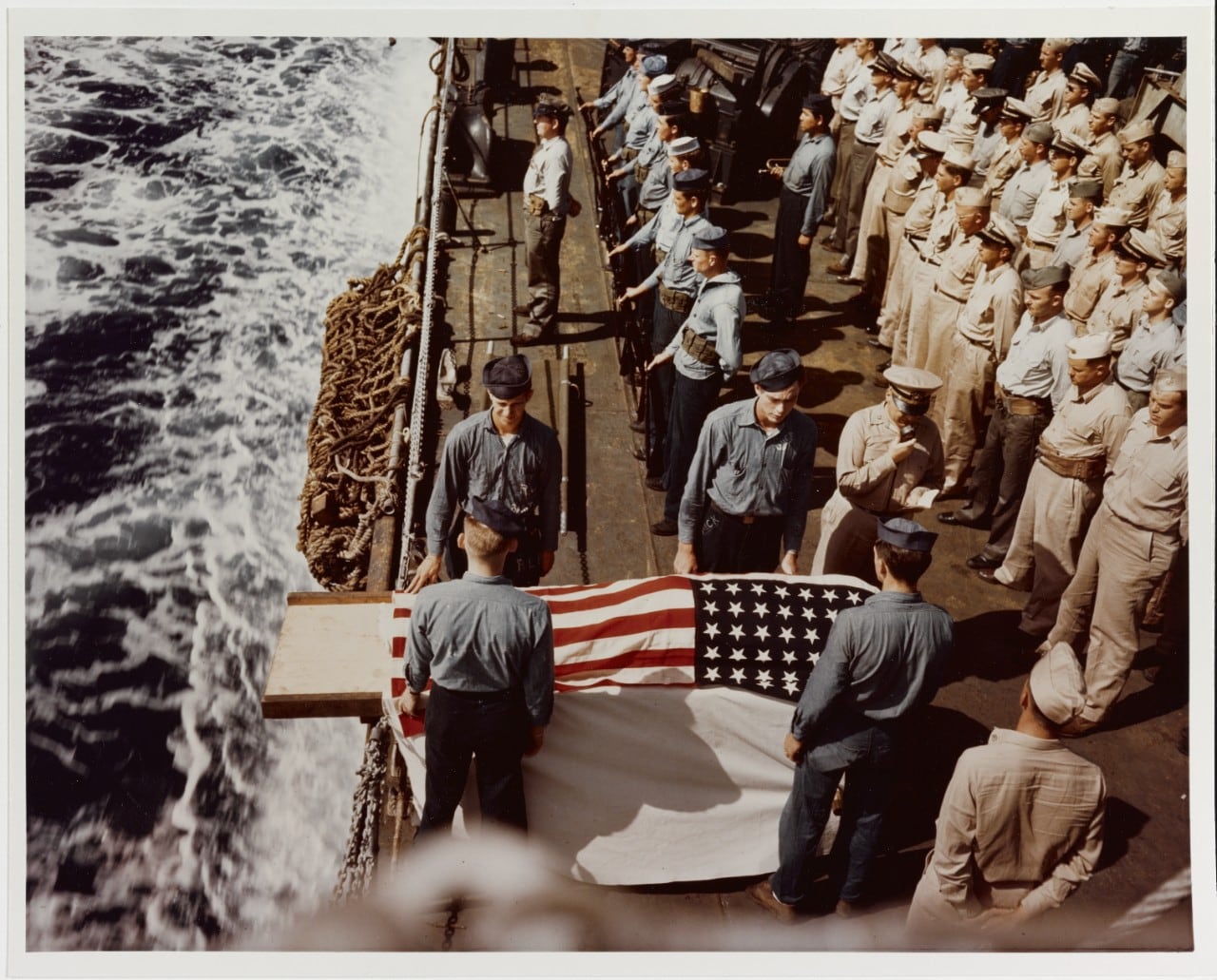
This article originally appeared in the Winter 2007 issue (Vol. 19, No. 2) of MHQ — The Quarterly Journal of Military History, a sister publication to Navy Times. It was written by then-Marine Capt. Robert S. Burrell, who had taught history at the U.S. Naval Academy. His published research on Iwo Jima won awards from the Society of Military History, the Naval Historical Foundation, the Naval Historical Center and the Marine Corps Heritage Foundation. This article was adapted from his book The Ghosts of Iwo Jima (Texas A&M University Press, 2006). Want to have the lavishly illustrated, premium-quality print edition of MHQ delivered directly to you four times a year? Subscribe now at special savings!
RELATED
